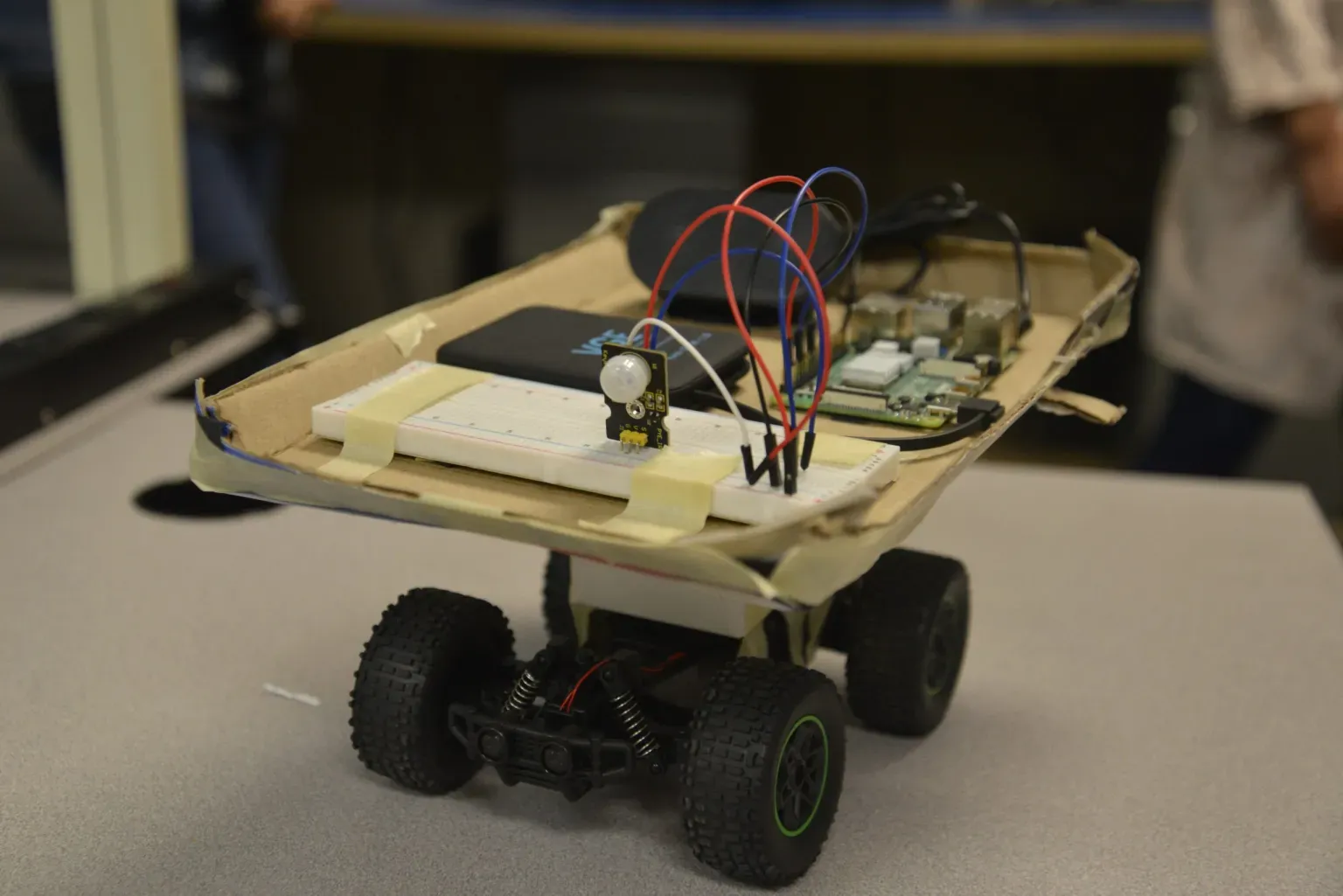HIGHLANDS RANCH, Colo. — They may not have their licenses yet, but four young STEM School Highlands Ranch high schoolers are working to eliminate one of the worst fears for Colorado drivers: hitting wildlife.
The all-female student team, who call themselves STEM’s Rubber Duckies, have designed an infrared device that can detect wildlife and alert drivers. The idea stemmed from a love for animals and a passion to increase safety for everyone on the road.
“Just with our interesting approaches that our teenage minds can create, we are able to innovate in ways that aren’t seen before and find solutions that haven’t been found before and create our own impact,” sophomore Bri Scoville said.
The team competed in the “Samsung Solve For Tomorrow” contest where they became state finalists. Sophomore Siddhi Singh, who started the team, said the Rubber Duckies didn’t think they were going to make it that far because they came into the competition late.
As the team advanced, they won thousands of dollars in Samsung gear to help them with their project. Although they didn’t advance to the national finals, the Colorado team have until next March to continue working on their device.
“I wouldn’t necessarily say that we failed,” freshman Robyn Ballheim said. “Because we don’t really fail until we give up and I think if we keep pursuing this as far as we can, we’re gonna get there eventually.”
Initially, the device was planned to repel wildlife away from cars by emitting a sound with a cost effective, sustainable and accurate animal detection and driver alert system. Through their research process, the team found that sound didn’t do much to deter animals.
So, the team switched to a driver-awareness system. They programmed a sensor to track motion to trigger a warning light. They then implemented a more intricate algorithm that clumped specific temperature data to track animal heat motion with a special camera and calculate if it was getting closer or further from the road.
With artificial intelligence rapidly progressing, the team used that to their advantage.
“We basically decided to implement a blacklist system,” said Singh. “Whatever it would detect, if it doesn’t match what the IR camera is inputting, it would basically blacklist it so it wouldn’t be caught up by the main camera.”
As the team spoke to different sources, many raised doubts. The doubts were centered around real concerns, such as snow or fog obstructing the view of animals, but Dhriti Sinha, a sophomore, said it only pushed the team to look at new perspectives and adapt to changes.
Singh believes a contributing factor to the team’s success was the fact teammates were able to collaborate with one another and were open to pivoting their thinking.
“If you really believe in a problem and you really believe in making a difference, you have to be willing to adapt,” said Ballheim.
Computer science teacher Tylor Chacon, who sponsors the project, said wildlife-vehicle collisions are hurting both animals and people and it’s a problem that is taken on by governments and large corporations.
“We didn’t realize how big of an issue it was until we got the chance to talk to CDOT,” said Chacon.
CDOT is the Colorado Department of Transportation. Singh learned from CDOT that wildlife-vehicle collisions are a top concern.
In 2022, CDOT’s annual roadkill report recorded 7,338 animal deaths throughout the entire state. In region one, which includes Douglas County, there were 778 reported deaths. And, in Douglas County alone, there were 179 deer hit.
One of CDOT’s environmental managers told the team that these kinds of collisions cost Coloradoans up to $80 million every year.
As the team further developed their device, it looked at Tesla’s open patents that focus on how Teslas detect objects to detect objects.
“With our system, we would essentially identify problem areas in the photo by cross referencing our heat data, the distance data and the object tracking, and using AI to classify it and if all that data checks out, then we can say there’s an accurate chance that an animal is moving into your field of view,” said Chacon.
The team strapped all the components of their device onto a remote control car and with permission of the school’s therapy dog, Daisy, put the device to the test. As the device approached Daisy, a sound alerted the driver.
Looking ahead, Scoville said the team would like to use LiDAR – Light Detection and Ranging technology – because it can detect distance as well as a FlIR thermography camera.
Aimed at lessening the burden on the state, the team said the device could be put in vehicles. For current cars, a micro controller connected to the speaker would receive signals transmitted from the camera. For future cars, it would utilize the same algorithm, but use existing car technologies for cost reduction and sustainability.
“Once we can show some accurate results with raw data, we want to start lobbying to see if the government would adopt our technology and maybe even if regulators would require that technology in future cars,” said Chacon.




